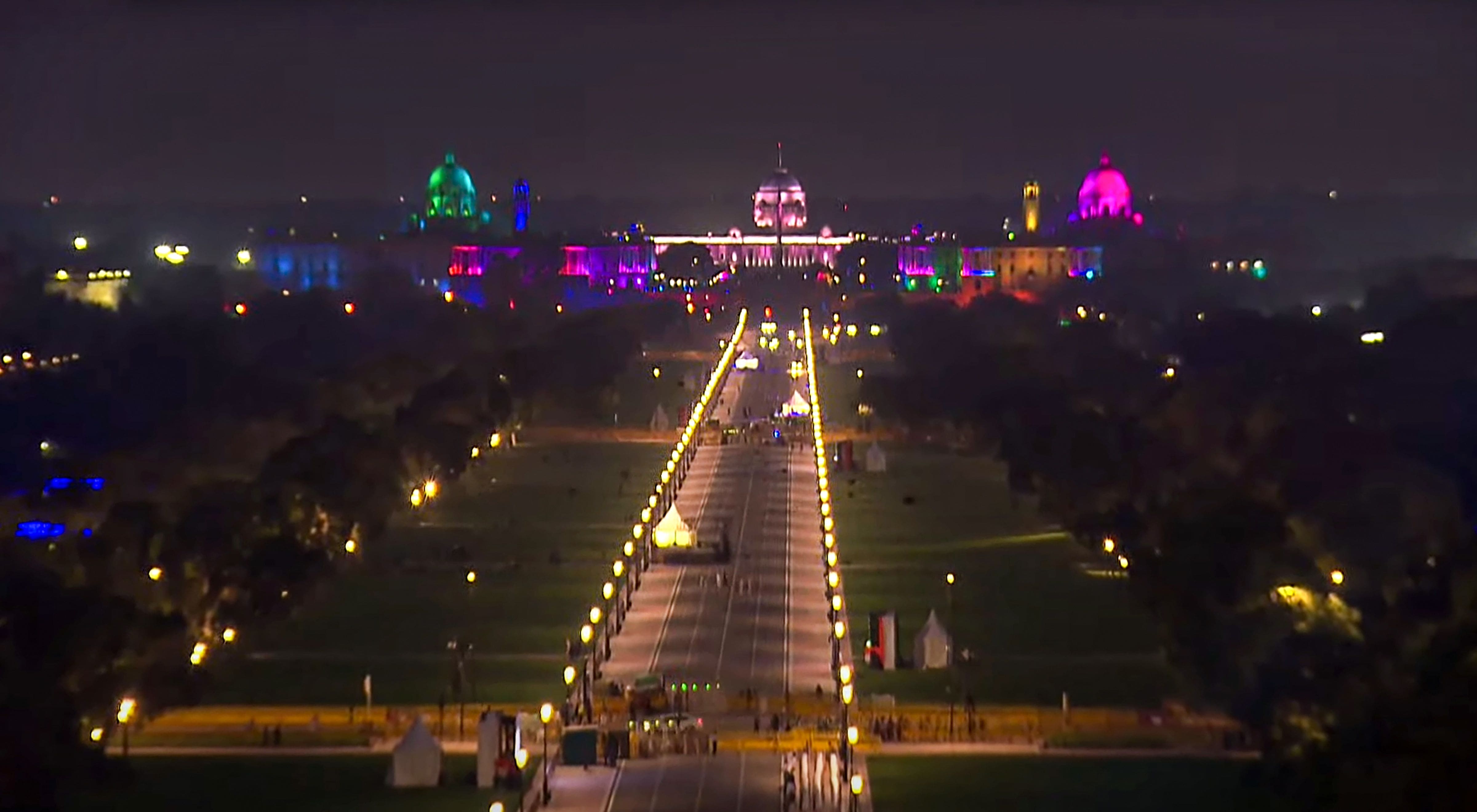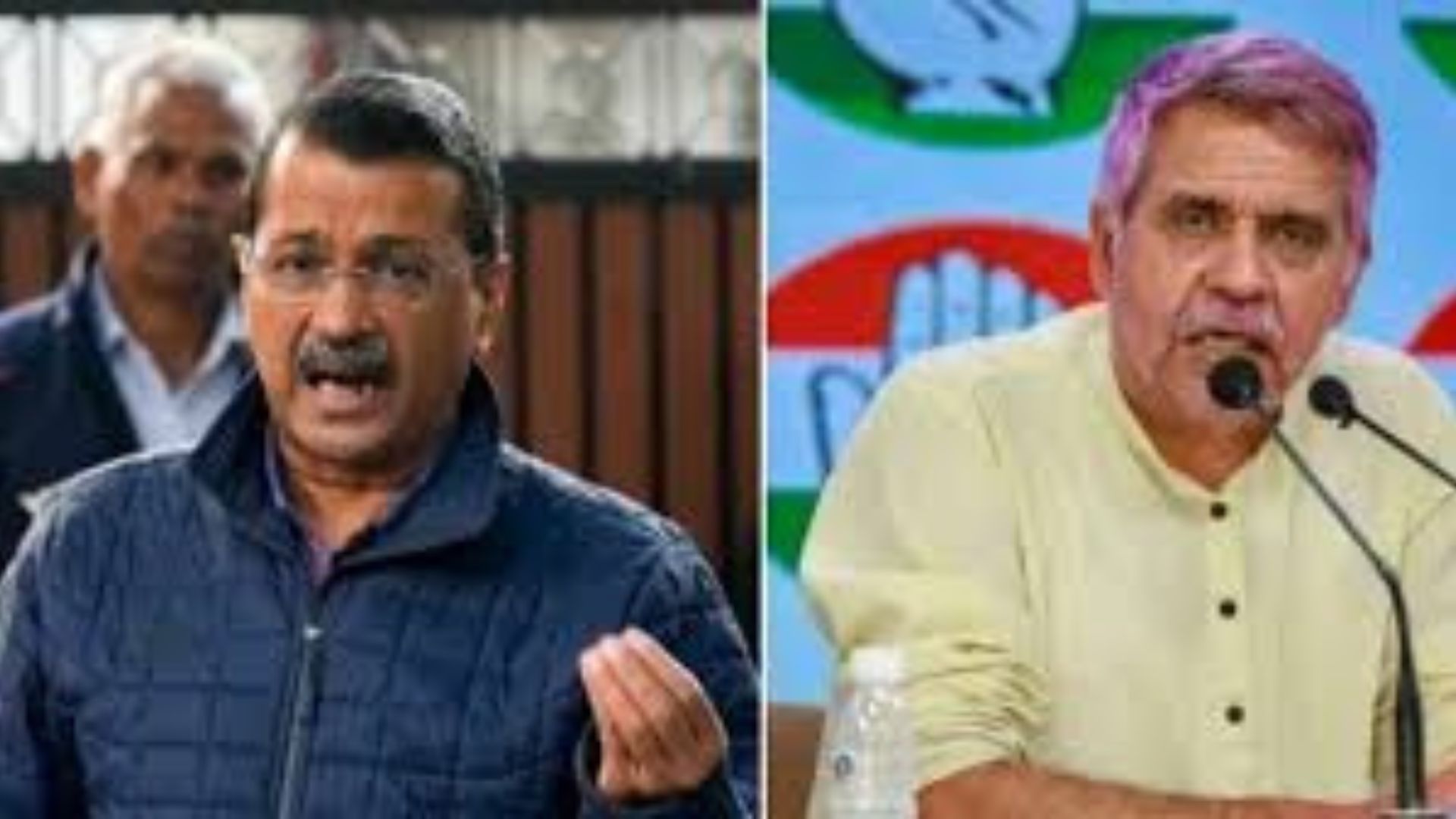Prime Minister Narendra Modi on 8 September 2022 celebrated the renaming of Rajpath as “Kartavya Path” along with the installation of the 28 feet high statue of Netaji Subhas Chandra Bose at India Gate, thereby erasing the last vestiges of colonial domination and reinforcing the emergence of New India.
“Rajpath, earlier known as Kingsway (before Independence), the symbol of slavery, has become a matter of history from today and has been erased forever. Today a new history has been created in the form of Kartavya Path. I congratulate all the countrymen for their freedom from yet another identity of slavery, in this ‘Amrit Kaal’ of independence,” the PM said at the event. “Now when parliamentarians, ministers and officers go on the ‘Kartavya Path’, they would be reminded of their duties and will get inspired,” Modi further added.
While Rajpath symbolised the power of the ruler, ‘Kartavya Path’ represents the sense of duty as well as the spirit of public ownership and empowerment. Rajpath was for the British Raj to which the people of India were enslaved. The installation of a 28-foot-high granite statue of Netaji Bose at the India Gate canopy, under which the statue of British monarch George V, once stood, marked the abolition of another sign of an imperialist mindset based on reckless expansionism. For Modi, getting rid of colonial vestiges has been an ongoing process. For example, in a historic first, the Republic Day parade in 2019, witnessed the veterans of Subhas Chandra Bose’s Indian National Army (INA) participating in the majestic parade. Again, be it declassifying Netaji’s files in 2016 or PM Modi’s decision in 2021, to celebrate January 23 henceforth, as “Parakram Diwas”, every year, going back to our roots has been PM Modi’s unifying mantra.
The Bose statue, the redeveloped pathway and the India Gate lawns will now represent more than mere physical structures. They will now establish the rise of India’s nationalist spirit. A series of decisions taken by the Modi government — renaming of Andaman Islands after Netaji, rechristening Race Course Road where the PM’s official residence is located as Lok Kalyan Marg, opening a museum of Netaji and his Indian National Army (INA) at the Red Fort in 2019, and introduction of Indian musical instruments for ceremonies of Independence Day, are just some of the few instances, to expunge colonial signatures.
For instance, the hymn, “Abide With Me”, penned by Henry Francis Lyte in 1861 and set to tune by William Henry Monk, was traditionally played since 1950, to conclude the last event of the Republic Day celebrations, at Vijay Chowk in New Delhi. Replacing “Abide With Me” with the soulful “Aye Mere Watan Ke Logon”, the patriotic song written by Kavi Pradeep, composed by C. Ramchandra, and memorably sung for the first time on Republic Day, 1963, by Lata Mangeshkar, is yet another example of dismantling a colonial mindset, by the Modi government. Beating the Retreat ceremony in 2015 saw Indian classical instruments such as sitar, tabla and santoor make their debut. In 2018, 25 of the 26 tunes used in the ceremony were composed by Indians. In 2019, Shankhanaad, a tune composed by Dr. Tanuja Nafde was added to the list of tunes played at the Beating the Retreat ceremony.
Again, Prime Minister Modi unveiled the new Naval Ensign (flag) at Kochi on 2 September 2022, which bears the seal of Chhatrapati Shivaji Maharaj, who laid the foundations of a modern navy in the 17th century. The colonial relic of St. George’s Cross which was removed by the Vajpayee government in 2001 and reintroduced by Sonia Gandhi controlled Congress government, was finally dropped from the Indian Navy’s flag, by the Modi government. The new ensign now features a blue octagon encompassing the national emblem that sits atop an anchor with ‘Sham No Varunah:’ (invocation to the Hindu God of Sea Varuna) written below. Sai Ganesh puts it very effectively, when he says, “Today countries like Indonesia and Philippines shall be importing Brahmos missiles from India. Vietnam is planning to purchase Indo-Israeli Barak 8 Missile Defense System. Malaysia has expressed interest to purchase LCA Tejas aircraft from India. More South-East Asian nations are going to purchase defence equipment from India and the prime intention of this defence partnership is to counter China”. The moot point here is, be it reclaiming the rich legacy of our forgotten freedom fighters like Netaji Bose or restoring the proud legacy of Chhatrapati Shivaji Maharaj and his formidable naval prowess, the Modi government has truly decolonised not just decades’ old government buildings, roads and naval war ships but decolonised our mind-set too. “Vocal for local” and “Aatmanirbhar Bharat” are concepts that now resonate with every proud Indian.
Take the “Har Ghar Tiranga” campaign this year,to mark completion of 75 years of India’s independence, for instance. As per CAIT, 30 crore flags were sold generating business of well over Rs 500 crore. The Tiranga found itself fluttering on tall commercial buildings, busy markets, traffic-jammed road signals, innocuous huts, boats, snowy mountains, islands, forest areas, and millions of homes. The national flag was hoisted atop the historic Clock tower or “Ghanta Ghar” in Srinagar’s Lal Chowk for the first time in 30 years, this year, on Republic Day, in yet another glowing example of how PM Modi has motivated Indians as a citizenry, to reclaim their lost heritage.
In January 2022, the “Amar Jawan Jyoti” at India Gate was merged with the eternal flame at the National War Memorial (NWM).After India defeated Pakistan in the 1971 war, the Amar Jawan Jyoti was constructed as a memorial for Indian soldiers who made the supreme sacrifice. It was inaugurated in 1972. But while the flame at “Amar Jawan Jyoti” paid homage to the martyrs of the 1971 and other wars, none of their names are present there at the India Gate. The names inscribed on India Gate are of only some martyrs who fought for the British in the World War-I and the Anglo Afghan War and this is a symbol of the country’s colonial past. However, the names of all Indian martyrs from all the wars are now housed at the National War Memorial. Hence, in a befitting homage to the memory of our martyrs, the flame at “Amar Jawan Jyoti “ was merged with the eternal flame at the NWM. Do note that it was Prime Minister Modi who on February 25, 2019, inaugurated the NWM, where names of 25,942 soldiers have been inscribed in golden letters on granite tablets, in a poignant tribute to our bravehearts. A.PJ. Abdul Kalam once famously said–”Do we not realise that self-respect only comes with self-reliance?” Indeed, as if on cue, Prime Minister Modi, in the last eight years, has reinforced the virtues of self-reliance, based on the idea of a New India, which is ambitious, inclusive and aspirational.
Sanju Verma is an Economist, National Spokesperson of the BJP and the Bestselling Author of ‘The Modi Gambit’.







